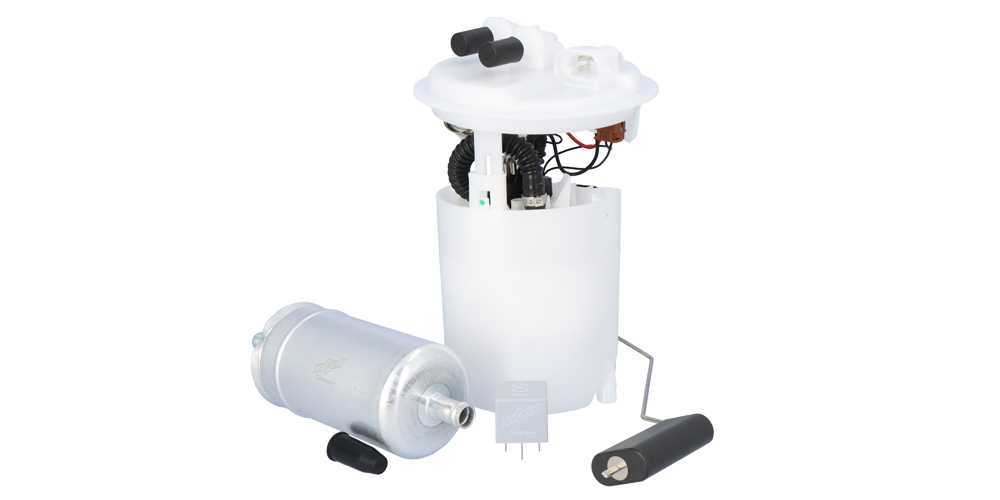In older vehicles, electric fuel pumps are installed outside the tank. The fuel system has a supply and return line, various filters and possibly a vapor bubble separator. They are controlled via a relay. A pump failure usually occurs due to wear or external influences, in particular due to contaminated fuel. This clogs the pre-filter in the line or in the pump, as a result of which the electric motor of the pump is no longer flushed and cooled by the fuel.
In modern fuel delivery units that still have a return line, leaking fuel tank ventilation hoses in combination with long idle times and low fill levels often lead to severe corrosion in the tank system. This leads to sluggishness of the electric fuel pump and thus to increased power consumption. The resulting heat in turn causes increased resistance, which can be seen at the connector of the delivery unit.
In both cases, it is necessary to clean the tank system and eliminate the cause of the failure. Of course, a professional repair also includes replacing all fuel filters, the fuel pump relay and the crimp connectors that have been damaged by the increased current consumption.
In the latest vehicles, demand-regulated low-pressure and high-pressure circuits are used, which enable a return-free design. Control in the low-pressure system is no longer via a fuel pump relay and a pressure regulator or limiter, but via a separate fuel pump control unit; the maps for the delivery unit are stored here.
This control unit receives information about the respective operating status of the engine as well as the desired flow rate and pressure via a separate data bus from the engine control unit. Monitoring is usually carried out via a pressure sensor on the engine. The control is pulse width modulated (PWM) to the fuel delivery unit, where the pump builds up the desired pressure.
As PWM is a square-wave signal with a constant frequency (i.e. constant period) and variable duty cycle, it cannot be tested with a standard multimeter. Only a motor tester or oscilloscope can help here, as the digital multimeter only displays a single voltage due to latency. As only the voltage but not the duty cycle changes in the event of contact problems, this type of transmission is significantly less sensitive to disruption.
This is why PWM is already used in many actuators, such as in our EGR modules, throttle valve actuators and idle control valves, where it has proven its worth.
Demand-based fuel regulation reduces power consumption and heats the fuel less, resulting in lower consumption.
